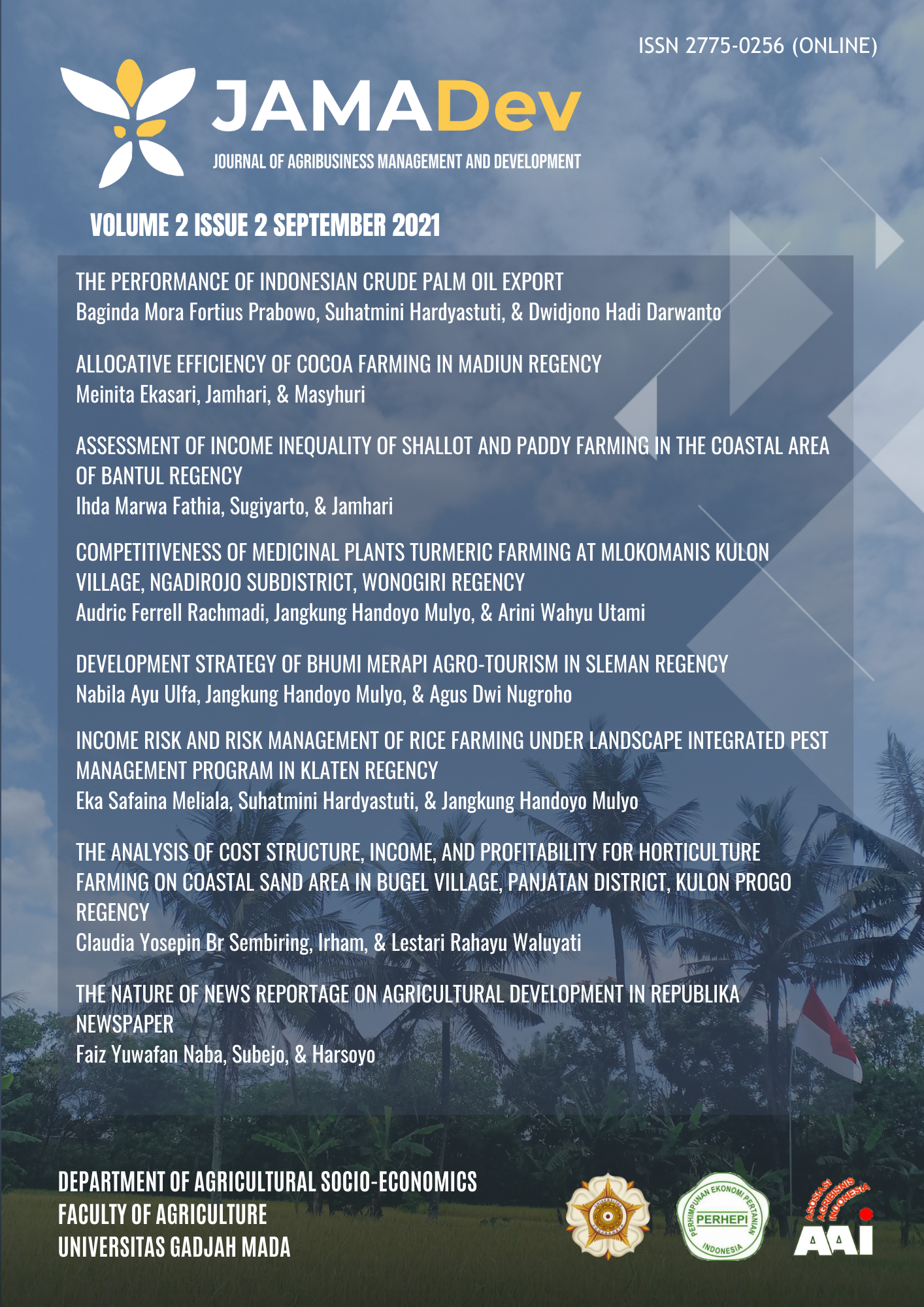Assessment of Income Inequality of Shallot and Paddy Farming in The Coastal Area of Bantul Regency
Abstract
This study attempts: (1) to estimate the income of shallot and paddy farming, (2) to calculate the contribution of shallot and paddy farming to the household income of the farmer, (3) to know the structure pattern of farm household income, and (4) to analyze the inequality of farm household income in the coastal area of Bantul Regency. This research was located in Sanden and Kretek Sub-District of Bantul Regency. The samples were 45 farmer households that did shallot and paddy farming. Farming income contribution was gained by calculating the percentage of farming income to the total household income. The data were analyzed by a one-sample t-test. The contribution pattern was obtained by descriptive analysis. The income gap was identified by the Gini index analysis, Gini index decomposition, World Bank criteria, and Lorenz curve. The results showed that (1) the average income of shallot farming was greater than paddy farming, (2) the contribution of shallot farming income was higher than paddy farming income to farm household’s income, (3) the structure of farm household’s income has a different pattern – households with above-average income have a structural pattern that is dominated by non-shallot and paddy farming, and (4) based on Gini Index and World Bank category, farm household’s income inequality is in the medium category.




